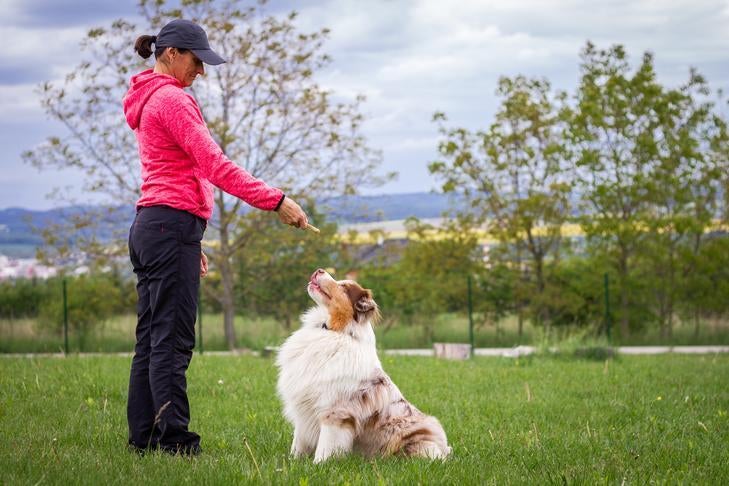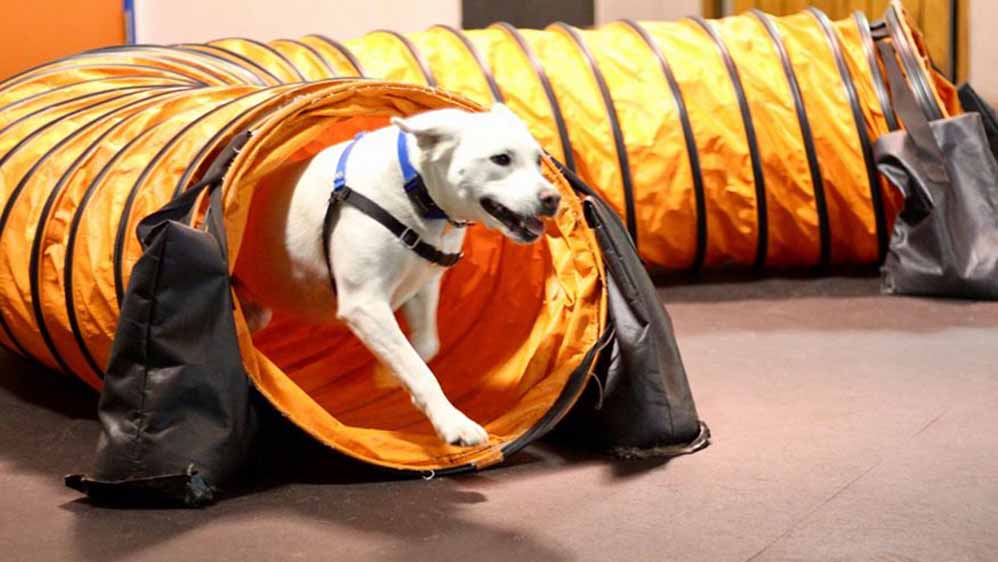Understanding Dog Body Movement Throughout Dog Training
Understanding Dog Body Movement Throughout Dog Training
Blog Article
Vital Tips for Effective Dog Training: An Overview for Pet Dog Owners
Reliable canine training is a multifaceted procedure that needs a strategic technique customized to both the pet dog's personality and the proprietor's goals. Understanding just how to browse these obstacles can dramatically boost the training experience, eventually changing the connection in between owner and pet.
Comprehending Canine Actions
Recognizing dog behavior is vital for reliable training and cultivating a harmonious relationship between dogs and their owners. dog training. Pet dogs interact largely via body language, vocalizations, and actions, making it important for proprietors to translate these signals properly.

Socialization plays a significant function in canine actions; exposure to numerous atmospheres, individuals, and various other animals can substantially influence a canine's temperament. Variables such as type qualities and specific temperament need to lead training techniques, as some breeds may have certain behavior characteristics that necessitate tailored approaches. By recognizing these aspects, proprietors can produce a helpful atmosphere that encourages positive actions, leading to effective training outcomes and a much deeper bond with their pets.
Developing Constant Commands
Efficient communication with your pet starts with developing regular commands. This fundamental element of training is crucial for cultivating understanding in between you and your pet. Consistency in the commands you use ensures that your pet can accurately associate particular words or phrases with the desired habits.
When selecting commands, select clear, distinct words that are very easy to claim and separate from each other. Prevent using similar-sounding commands that might confuse your pet dog. For instance, making use of "sit" and "remain" is proper, but "sit" and "struck" could result in misconceptions.
In addition, maintain the very same tone and quantity for each command. Dogs are sensitive to vocal cues, so differing your tone can create complication.
It is similarly important to make certain that all relative get on the same page concerning the commands made use of. A united front in command use will protect against blended signals and reinforce the learning process.
Favorable Reinforcement Techniques
The power of favorable reinforcement in dog training hinges on its capacity to motivate desired behaviors with benefits and appreciation. This strategy is grounded in the concept that habits complied with by desirable end results are more probable to be repeated. By incorporating favorable reinforcement right into your training routine, you can efficiently form your pet dog's behavior in a constructive fashion.
To apply favorable reinforcement, it's vital to determine what encourages your dog, whether it be deals with, toys, or spoken appreciation. When your pet does a wanted activity, such as resting on command, quickly award them with a reward or love. This association between the command and the positive result reinforces their understanding.
It's crucial to timing the rewards correctly; supplying the support within seconds of the wanted behavior helps your canine make the link (dog training). Additionally, uniformity is crucial-- ensure that all relative use the same commands and incentive systems to avoid complication
Slowly, you can decrease the regularity of deals with as your canine learns the habits, transitioning to commend or recurring benefits. This method not only promotes a strong bond in between you and your pet dog yet also advertises a positive understanding environment, making training a pleasurable experience for both.
Socialization and Communication
Constantly exposing your pet dog to a variety of atmospheres, people, and various other pets is critical for their social advancement. Socializing ought to begin early, ideally during the important home window of 3 to 14 weeks, when puppies are most responsive to brand-new experiences. Older dogs can likewise profit from continuous socialization efforts.
Present your pet to various setups, such as parks, pet-friendly shops, and urban locations. This exposure assists them adjust to numerous stimulations, decreasing anxiousness and anxiety actions. Encourage positive communications with other pet dogs and individuals, ensuring that these encounters are risk-free and controlled to cultivate self-confidence.
Use organized playdates with courteous pet dogs, as this can boost your dog's social skills and teach them appropriate actions. Obedience classes and training sessions likewise offer exceptional chances for socialization, enabling your pet to interact with others in a monitored environment.
Screen your pet dog's body language during interactions, as this will certainly aid you gauge their comfort degree. Progressively boost exposure to more difficult scenarios while making certain that each experience is positive. A well-socialized dog is a lot more most likely to display well balanced actions, making them a joy to have in any type of setup.
Resolving Usual Training Difficulties
Every pet dog owner will encounter training difficulties at some factor, regardless of their pet's age or socialization degree. Recognizing common concerns such as stubbornness, diversions, and their explanation fearfulness can assist in creating effective techniques for improvement.

Progressively present distractions as the pet dog comes to be a lot more skillful in commands. Short, frequent training sessions are additionally effective in maintaining interest.
Terror can impede a pet dog's understanding anchor process. Steady desensitization to the source of worry, paired with favorable support, can assist minimize stress and anxiety. Patience is crucial; never ever force a canine right into a scenario that triggers distress, as this may aggravate the issue.
Ultimately, understanding and dealing with these usual obstacles with a structured approach will cultivate a much more productive training experience, reinforcing the bond in between pet and owner while promoting effective discovering.
Final Thought
In summary, effective dog training depends on an extensive understanding of canine actions, the establishment of regular additional hints commands, and the application of favorable reinforcement strategies. Socializing plays a critical duty in developing well-adjusted pet dogs, while dealing with common training obstacles needs patience and adaptability. By applying these important methods, animal proprietors can foster a strong bond with their dogs and promote desirable habits, inevitably resulting in a harmonious connection between people and their canine buddies.
Comprehending pet dog actions is vital for reliable training and cultivating an unified relationship between pooches and their proprietors.Socializing plays a significant role in canine behavior; exposure to different atmospheres, individuals, and various other pets can dramatically influence a pet's character.The power of positive support in pet dog training exists in its ability to encourage desired behaviors via incentives and praise. By integrating favorable reinforcement into your training program, you can properly shape your pet's behavior in a positive fashion.
In summary, effective canine training relies on a detailed understanding of canine behavior, the establishment of constant commands, and the application of positive reinforcement methods.
Report this page